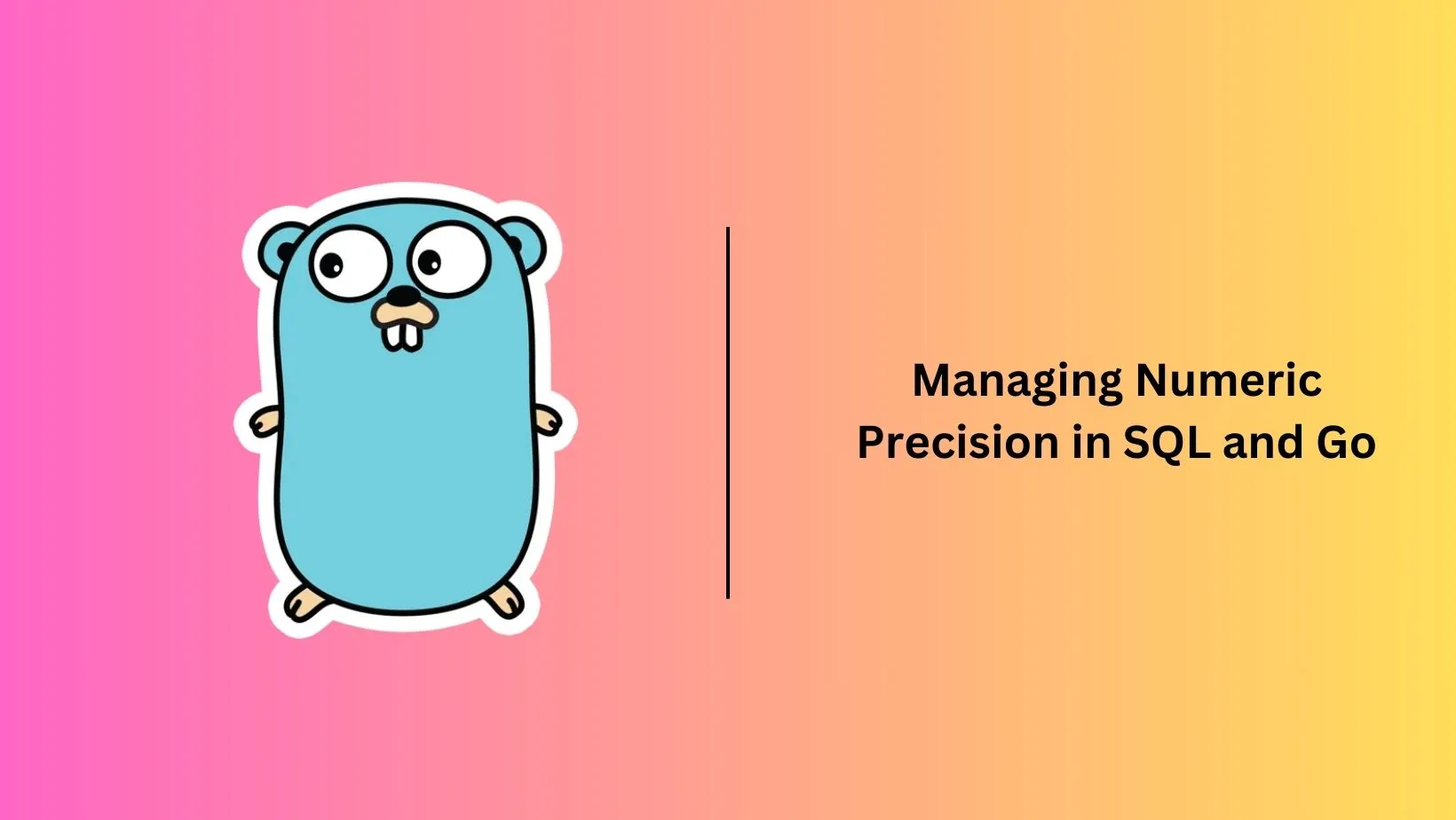Managing Numeric Precision in SQL and Go
 Rohan
Rohan
Introduction
This document delves into the intricacies of handling numeric precision discrepancies when working with SQL databases and the Go programming language (Go). We explore the differences in behavior when retrieving values from SQL database columns defined as FLOAT(64,2) and DECIMAL(64,2) while utilising the float64 data type in Go. This discussion aims to shed light on the underlying principles and offers practical examples to clarify these nuances.
Floating-Point Precision (FLOAT)
Definition
SQL column definitions like
FLOAT(64,2)indicate that the column can store a floating-point number with 64 bits of total storage and allows displaying up to 2 decimal places.The representation of
FLOATdata is binary, adhering to the IEEE 754 binary floating-point standard.
Behavior
Converting
FLOATvalues to Go'sfloat64may result in rounding errors, particularly when dealing with decimal values containing multiple decimal places.Binary representation may not accurately portray certain decimal numbers, leading to the observed variations.
Example
Suppose an SQL column is defined as FLOAT(64,2) with a value of 1000000128. When this value is retrieved and converted to a float64 in Go, it may display as 1000000100 due to rounding:
CREATE TABLE MyTable (
my_column FLOAT(64,2)
);
-- Inserting a value into the table
INSERT INTO MyTable (my_column) VALUES (1000000128);;
// Retrieving the value in Go using GORM
var value float64
db.Table("MyTable").Select("my_column").Row().Scan(&value)
// The value may be displayed as 1000000100 due to floating-point precision limitations
Decimal Precision (DECIMAL)
Definition
DECIMAL(64,2)in SQL utilises a fixed-point decimal representation.It precisely stores decimal numbers with the specified number of decimal places.
Behavior
DECIMALin SQL ensures values are stored and retrieved without introducing rounding errors, guaranteeing precise representation.It is the preferred choice for applications requiring high precision, especially in financial calculations.
Example
Changing the SQL column data type to DECIMAL(64,2) results in accurate representation and retrieval:
CREATE TABLE MyTable (
my_column DECIMAL(64,2)
);
-- Inserting a value into the table
INSERT INTO MyTable (my_column) VALUES (1000000128);
// Retrieving the value in Go using GORM
var value float64
db.Table("MyTable").Select("my_column").Row().Scan(&value)
// The value will be correctly displayed as 1000000128 without rounding errors
Conclusion
The variation observed between FLOAT(64,2) and DECIMAL(64,2) when using the float64 data type in Go stems from the fundamental disparities between floating-point and decimal representations. While float64 is versatile for various applications, it may not provide the requisite precision for specific decimal values, especially those with precise decimal place requirements. Consequently, for applications necessitating utmost precision with decimal values, it is advisable to opt for the DECIMAL data type in SQL or implement specialised decimal arithmetic libraries in Go.
It’s worth noting that the DOUBLE data type in SQL also offers improved accuracy compared to certain other data types, such as FLOAT. However, when seeking the utmost precision, especially concerning decimal values, the DECIMAL data type reigns as the unrivaled standard for precision and accuracy, making it the preferred choice when precision is an unwavering requirement.
Subscribe to my newsletter
Read articles from Rohan directly inside your inbox. Subscribe to the newsletter, and don't miss out.
Written by
